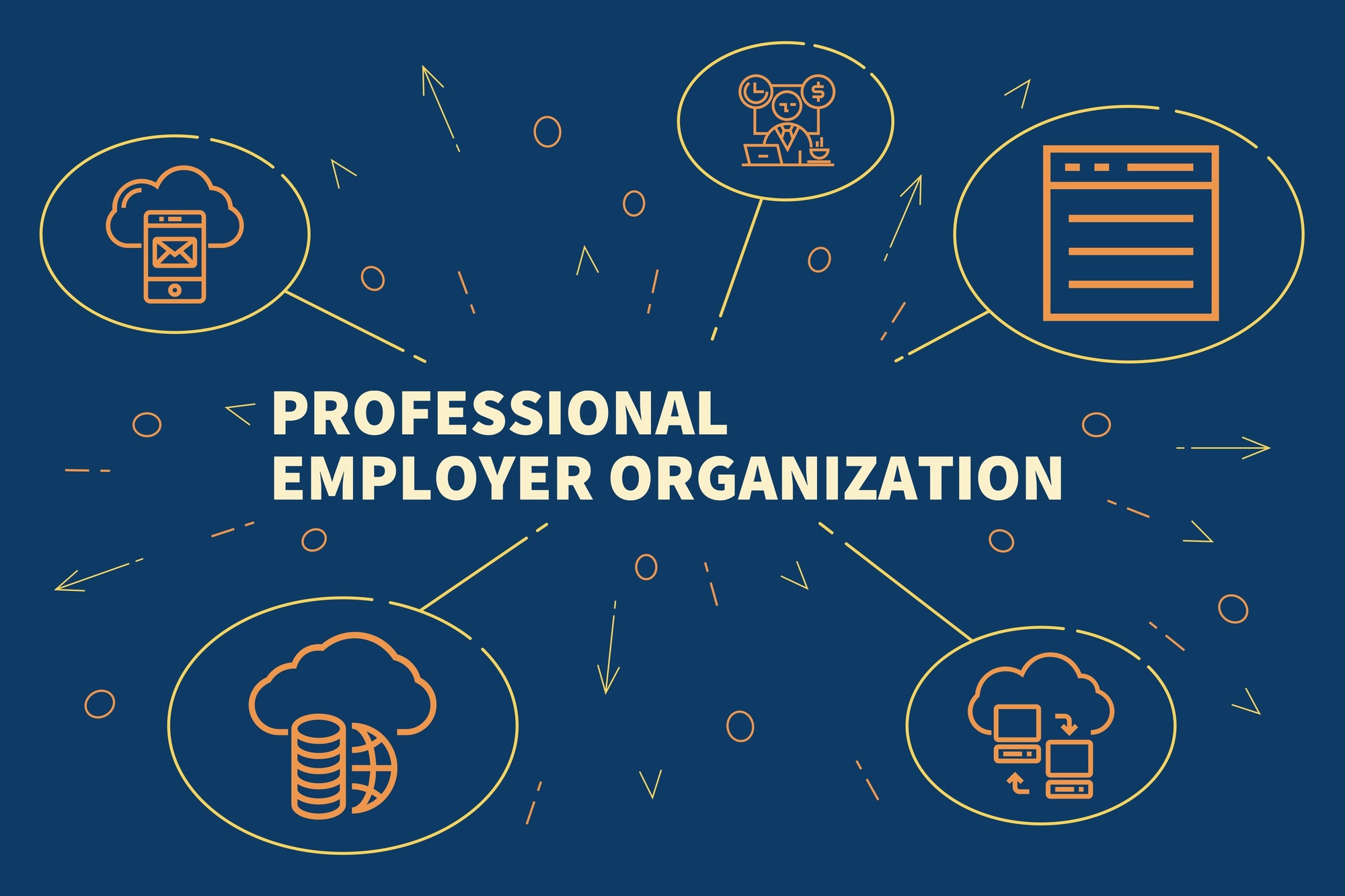When You Need To Use a Vacuum Excavator
Posted on September 20, 2022 by Logo Design Tips and Tricks

Are you tired of shoveling snow off your driveway and sidewalks? Do you wish that you had a better way of removing snow and ice from hard surfaces and pavement? Whether you own a business or are an individual, you need to invest in a vacuum excavator.
Wielding a vacuum is a lot easier than using a snow blower or a shovel to clear off the pavement. They’re also more environmentally friendly, as they don’t push snow into storm drainage, as a snow blower can.
Read on and we’ll walk you through when you need to use a vacuum or suction excavator.
When You Need to Use a Vacuum Excavator
Vacuum excavators are one of the most versatile machines on a construction site. With their ability to quickly and efficiently excavate narrow trenches, they are perfect for a variety of applications.
Here are a few situations where a suction excavator would be the best choice for the job.
Trenching
A vacuum excavator is an important tool for trenching. It is a large, powerful machine that can quickly and easily dig through hard, compacted soil. When you need to use one, it is important to follow some basic safety guidelines.
First, always make sure that the area around the machine is clear and free of obstacles. Second, always wear protective clothing, including gloves, goggles, and a hard hat.
Third, be sure to stay away from the machine while it is in operation. Finally, always follow the manufacturer’s instructions when using the machine.
Septic Work
Suction excavators are often used for septic work. They are used to dig the trenches for the septic system and to excavate the area around the septic tank.
This type of excavator is also used to clean out the septic tank and remove any debris that may be blocking the pipes. Contact a local vacuum excavator rental company to learn more about how these machines can help you with your next project.
Excavating
A vacuum excavator is a powerful and versatile tool that can be used for a variety of excavating tasks. Suction excavators are ideal for excavation of areas that are difficult to access with traditional excavating equipment. They are tools to excavate small spaces.
They can also be used to remove debris from an area without damaging the surrounding soil. Suction excavators, are available in a variety of sizes and configurations to suit your specific excavating needs.
Demolition Work
If you need to do some demolition work, a vacuum excavator can be a helpful tool. This type of excavator uses suction to remove debris and soil. It can be used to excavate areas that are hard to reach with traditional excavators.
A suction excavator can also be used to clean up after a demolition job.
Getting the Work Done
If you’re dealing with a construction or landscaping project that involves working around delicate underground utility lines, a vacuum excavator is the best tool for the job.
By using high-powered suction, a suction excavator can quickly and safely remove soil and other materials from buried utility lines without damaging them.
So, when you need to use a suction excavator, rest assured that you’re making the right decision for your project.
Did you find this article helpful? Check out the rest of our blog for more!
7 Benefits of Using a PEO Service
Posted on August 16, 2022 by Logo Design Tips and Tricks

The COVID-19 pandemic has forced everyone to reorder their lives and work situations in drastic ways. Even if it is a small one, it has had to rethink its operations to protect its employees and operations.
Planning to run your business, now and into the future, should include considering a professional employee organization (PEO) service. If you have not yet heard about the benefits of using a PEO, you are about to.
Keep reading to learn about how PEO service can further protect your business, its employees, and your bottom line in the months (and years) to com
1. Attract Top Talent
There are some ways that professional employer organization services can help you get and keep the best employees for your business. One way is by offering a comprehensive benefits package that can attract top talent.
It helps you screen candidates and manages the hiring process to find and select the right employees for the right positions. They can provide training and development programs to help employees reach their full potential.
By partnering with a PEO, you can focus on running your business while leaving the HR tasks to the experts and help to resolve any employee issues that may arise.
2. Help You Comply With Employment Laws
If you are an employer, you know that compliance with employment laws is essential to avoid costly penalties. PEOs can provide the resources and expertise you need to stay compliant.
It can help you with everything from maintaining employee records to ensuring that you are following the latest changes in employment law. Besides, PEOs can provide you with access to employee help programs, which can help your employees address personal and work-related issues. To know more about their responsibilities, click here.
3. Reduced Employment Costs
In an economy that is struggling, the last thing businesses want to do is reduce their workforce and incur the associated costs of unemployment. However, it is sometimes necessary, and it is a cost-effective solution that can save your company money while still providing quality customer service.
Peo Service’s reduction in employment costs benefits businesses by allowing them to keep more revenue and reinvest it into other areas of their business. It is also able to scale up or down as needed, so companies only pay for the customer service they need. This scalability means businesses can save even more money using Peo Service during slower periods.
4. Greater Employee Productivity
There are some ways that Peo Service helps greater employee productivity. It allows employees to access their records and updates from anywhere, at any time. This means that they can stay on top of their work even when they are out of the office.
It reduces the time spent on administrative tasks, such as updating records and filing expenses. This frees up time for employees to focus on more productive tasks.
Peo Service also provides employees with access to a wide range of tools and resources that can help them to be more productive, such as task lists, project management tools, and online training. Taken together, these factors can lead to a significant increase in employee productivity.
5. Payroll and Tax Administration Services
An organization’s payroll and tax administrative processes can be very complex and difficult to manage. This is particularly true for small and medium-sized businesses that often lack the internal resources to handle these functions.
Peo services help ensure that your business is compliant with all relevant laws and regulations. They can help you optimize your payroll and tax processes to improve efficiency and save you money.
Whether you need help with setting up a new payroll system or troubleshooting an existing one, they can provide the expertise you need to keep your business running smoothly.
6. Risk and Liability Reduction
Peo Service helps risk and liability reduction in a few different ways. One way is by providing HR services, which can help to identify potential risks in the workplace and help to put in place policies and procedures to mitigate those risks. Identifying risks early, helps organizations avoid or reduce potential losses.
It helps protect business owners from personal liability for the debts and obligations of the business. It is a separation of the owner’s personal assets from the business assets, which reduces the owner’s risk of losing their personal assets if the business fails.
It can help to create a culture of safety in the workplace by providing training and resources on safety standards and best practices. Finally, PeoService provides workers’ compensation insurance, which can help to reduce the financial burden on businesses in the event of an injury or accident.
7. Provide Peace Of Mind
Hiring a professional service to handle your business needs can provide peace of mind and free up your time to focus on other aspects of your business. A reputable service will have the experience and knowledge to handle your business in an efficient and effective manner.
Additionally, they will be able to handle any unexpected challenges that may come up. This will allow you to focus on your business goals and mantra, without having to worry about the day-to-day operations.
Peo Service Protect Your Business
If you’re looking for superior protection for your business, PEO services are the answer. With decades of experience, PEOs can provide your business with the resources and support it needs to thrive.
Understanding the role of a PEO can equip you to make better decisions for the future of your business.
If you found these helpful and want to read more great content. Check out our latest blog posts now!
Business Structuring: What’s Best for My New Startup?
Posted on August 02, 2022 by Logo Design Tips and Tricks

Establishing a new business is a huge undertaking, making proper structuring essential. The wrong business structuring could spell doom for a new startup.
Each business is different naturally but no single business structuring strategy is universal. However, there are some fundamental principles that apply to most businesses. But which ones apply to your startup?
Not sure where to begin? Don’t worry, we’ve got you covered. These quick and easy tips will help you determine the best business structure for your new startup.
Sole Proprietorship
There are a few different business structures to choose from when starting a new business and the best option for you will depend on a few factors.
If you are the sole owner of the business and will not have any partners, then a sole proprietorship is likely the best option. This structure is relatively simple and easy to set up and you will not be subject to as much regulation as other structures.
However, sole proprietorships can be riskier than other structures because you are personally liable for all debts and obligations of the business.
Partnership
A partnership is a business structure in which two or more people operate a small business together. This can be a great option if you have a business idea but need help with funding or expertise.
It’s also important to choose your partners carefully as you’ll be sharing control of the business and will be held liable for any debts or losses incurred by the business.
Limited Liability Company (LLC)
A Limited Liability Company (LLC) is a popular choice for many small businesses because it offers protection for the owner’s personal assets in the event that the business is sued.
This type of business also has a simple structure and is relatively easy to set up. However, an LLC is not the best option for every business.
So, always remember to do your research about LLC advantages and disadvantages to know if it is the best choice for your business.
Corporation
A corporation is a popular choice for many new startups as it offers limited liability protection for the owners. This means that the owners are not personally responsible for the debts and liabilities of the corporation.
It is also easy to raise capital for as investors are more likely to invest in a corporation than in other business structures.
If you are looking for limited liability protection and easy access to capital, a corporation may be the right choice. However, if you are looking for a simpler business structure, another option may be better suited for your needs.
The Right Business Structuring for You
The business structuring that is best for your new startup depends on a number of factors.
These include the size and scope of your business, the amount of money you plan to raise, the level of control you want to maintain, and the amount of liability you are willing to assume.
Once you have considered all of these factors, you should consult with an experienced professional to determine which business structure is best for your particular business.
Did this article help you out? Check out more of our blogs!
How a Fulfillment Center Works
Posted on July 31, 2022 by Logo Design Tips and Tricks

A fulfillment center is one of the most important operations in e-commerce but many people don’t know what it does.
Fulfillment centers are warehouses where items can be sent for storage. They are part of the supply chain that allows e-Commerce sellers to send out the products that they have for sale on online marketplaces.
These fulfillment centers work together to sell and deliver items to customers. If any part of that chain fails, the whole system is compromised.
Continue reading to learn more about the role of a fulfillment center and how it works.
What is a Fulfillment Center?
A fulfillment center is a type of warehouse that is used to store and ship products for e-commerce businesses. Fulfillment centers are usually operated by third-party logistics providers (3PLs). When an order is placed on an e-commerce website, it is routed to the fulfillment center, where it is picked, packed, and shipped to the customer.
Fulfillment centers typically use sophisticated inventory management systems to track products and orders. They also typically employ a workforce of warehouse workers and pickers/packers to fulfill orders. Many fulfillment centers offer value-added services such as returns processing and custom packaging.
Why Are There Fulfillment Centers?
There are many reasons why fulfillment centers exist.
Storage and Distribution
There are many reasons why companies have fulfillment centers. One reason is that they need somewhere to store their product before it is shipped out. This is important because it allows the company to keep track of its inventory and make sure that they have enough products to meet customer demand.
They can also provide storage for inventory. This can be helpful for businesses that don’t have the space to store all their inventory.
Help in Packaging and Shipping
There are many reasons why someone may need a fulfillment center. Perhaps they need help in packaging and shipping their product. Maybe they need storage for their inventory.
A fulfillment center can take care of all the packaging and shipping for a product. This can be a big help for a small business that doesn’t have the time or resources to do it themselves.
A Fulfillment Center Has Warehouses in Various Locations
A fulfillment center has warehouses in various locations to provide storage space for products. The warehouses are located in different regions to provide customer service and to ensure product availability. The locations of the warehouses are chosen to minimize shipping costs and delivery time.
The center has a staff of employees who manage the inventory and ship the products to customers. The employees work in shifts to accommodate customer orders. The center uses a computer system to track inventory and process customer orders.
The system generates reports that help the staff to make decisions about product availability and customer service.
How a Fulfillment Center Works With New Technology Systems
A fulfillment Center works with different types of new technology systems to help automate and optimize their workflow. This can include anything from new software to hardware that is designed to make the fulfillment process more efficient.
By automating certain tasks and having a system that is designed to keep track of inventory and orders, a fulfillment center can effectively manage its workflow and keep its customers happy.
A fulfillment center that uses GPS tracking is able to keep track of its inventory as it moves around the warehouse. This helps them to stay organized and efficient, while also keeping track of where their inventory is at all times.
By using GPS tracking, a fulfillment center is able to keep track of its inventory, employees, and performance, all in one system.
The Whole Fulfillment Center Process
A fulfillment center has a whole process from procurement and receiving of items to shipping items to customers for their orders.
Receiving Inventory
This process begins with receiving inventory from suppliers. The ecommerce fulfillment center receiving team unloads shipments from trucks and brings them into the warehouse.
They then scan the products and enter them into the fulfillment center’s inventory system. This system tracks the products and their locations within the warehouse.
The products are entered into the system. The receiving inventory process is an important part of fulfilling online orders.
Inventory Storage
The inventory storage process is the heart of a fulfillment center’s operation. It begins when products arrive at the warehouse and are stored in the proper locations. The inventory storage process is key to ensuring that orders can be filled correctly and efficiently.
Order Processing
Fulfillment centers are responsible for the order processing process of an organization. This involves the coordination of orders from customers and ensuring that they are processed in a timely and efficient manner.
Fulfillment centers receive orders from customers either through online portals or over the phone. Once an order is received, it is then processed by the fulfillment center.
Picking and Packing
This includes tasks such as picking the products from the shelves, packing them into boxes, and shipping them off to the customer. Fulfillment centers also have to perform quality control checks on the products before they are shipped out. This is to ensure that the products meet the quality standards of the organization.
Shipping
The shipping process is typically handled by a third-party logistics company. These companies specialize in handling shipping and logistics.
The shipping to buyer process is a key part of the fulfillment center experience. It helps to ensure that buyers receive their orders quickly and efficiently.
Delivery
This process is known as “delivery to buyer”. Customers can track their orders on the ecommerce fulfillment center’s website and will receive an email notification when their order has shipped. Fulfillment centers use a variety of ecommerce shipping methods, including UPS, FedEx, and DHL.
The Importance of Quality Control in the Fulfillment Process
Inventory management and quality control are critical aspects of the fulfillment process. Quality control is the process of inspecting incoming and outgoing products to ensure that they meet quality standards. Inventory management is the process of tracking and managing inventory levels to ensure that products are available when needed.
Working together, quality control and inventory management help to ensure that products are available when customers need them and that they meet their expectations. This, in turn, helps to build customer satisfaction and loyalty. In addition, quality control and inventory management help to minimize waste and maximize profitability.
A Fulfillment Center Makes Return Processes Available
When customers purchase items from a company, they expect a certain level of customer service. This includes returning items that they are not satisfied with. A fulfillment center makes return processes available to their customers, so they can receive a refund or exchange the item for something else.
This service is available to customers who live in the United States and Canada. The return process is simple and easy to follow. Customers just need to fill out a return form and send it back to the fulfillment center.
A returns center or fulfillment center is a physical location where online retailers receive and process customer returns of items. This makes return processes available for broken items that can be returned or replaced. Online retailers use returns centers to minimize the cost and time associated with managing customer returns.
By having a designated returns center, online retailers can more efficiently process customer returns and resolve issues related to broken items. This ultimately saves the customer time and money.
A Fulfillment Center Has a 24/7 Customer Support
Many businesses are now using fulfillment centers to store and ship their products. These centers usually have 24/7 customer support in case any issues arise with orders.
This is beneficial for businesses because they can be sure that their customers will always be able to reach someone if they have any questions or concerns. It also allows businesses to focus on other aspects of their operations, knowing that their fulfillment center will take care of any customer issues that may come up.
Customer support is available through phone, chat, and email. The support team is knowledgeable and helpful. They are always willing to go the extra mile to help solve any problem. Customer support is one of the many reasons why the company is so successful.
Understanding How the Fulfillment Center Works
To maximize your business’s success, it is important to understand how your fulfillment center works. You can optimize your shipping and inventory management to save time and money.
You can ensure that your products are properly stored and shipped to your customers in a timely manner. Contact a fulfillment center today to learn more about how they can help your business grow.
For more business tips and tricks, or anything new in the business world today, keep checking out our blog.








